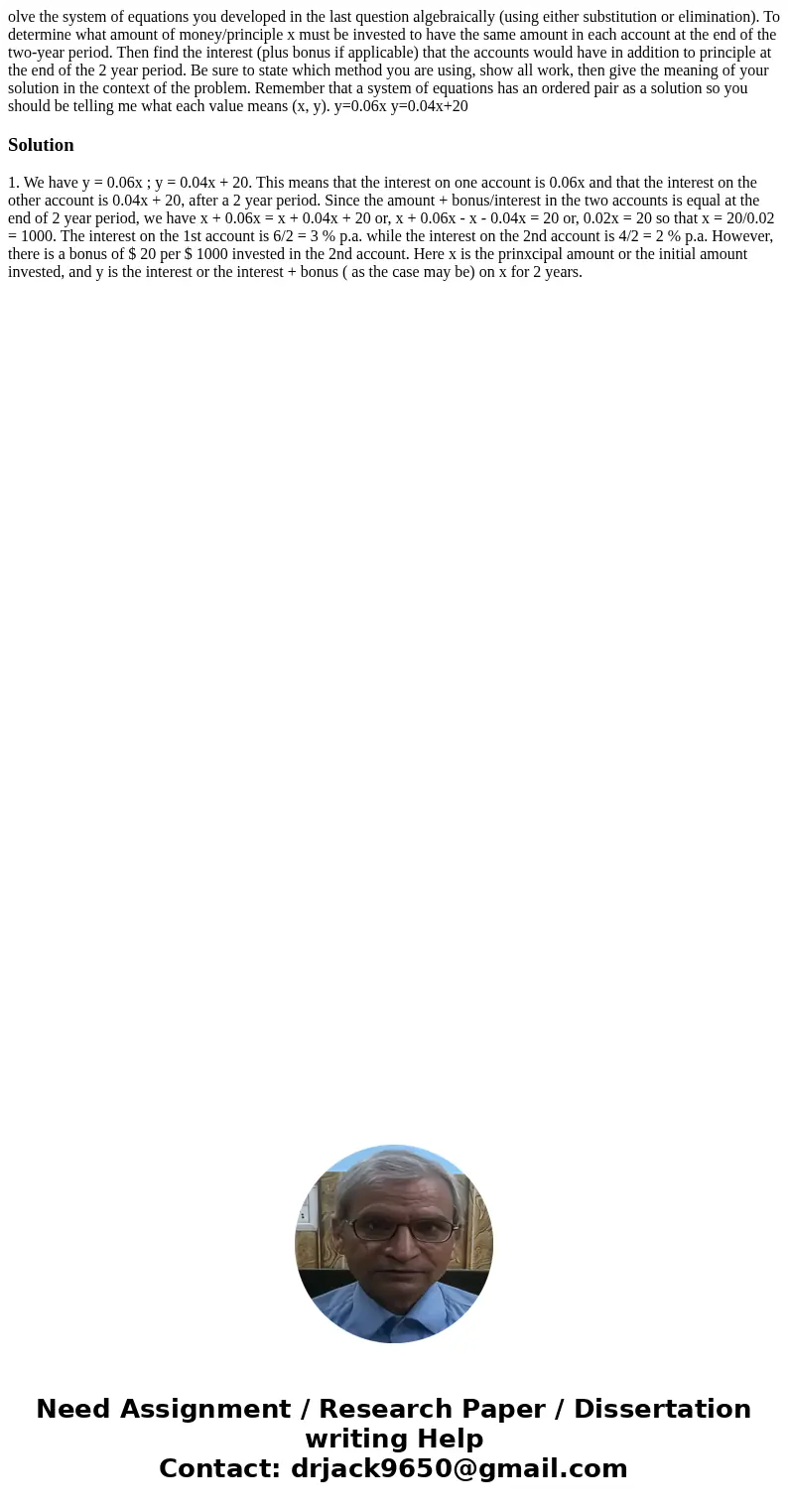olve the system of equations you developed in the last quest
olve the system of equations you developed in the last question algebraically (using either substitution or elimination). To determine what amount of money/principle x must be invested to have the same amount in each account at the end of the two-year period. Then find the interest (plus bonus if applicable) that the accounts would have in addition to principle at the end of the 2 year period. Be sure to state which method you are using, show all work, then give the meaning of your solution in the context of the problem. Remember that a system of equations has an ordered pair as a solution so you should be telling me what each value means (x, y). y=0.06x y=0.04x+20
Solution
1. We have y = 0.06x ; y = 0.04x + 20. This means that the interest on one account is 0.06x and that the interest on the other account is 0.04x + 20, after a 2 year period. Since the amount + bonus/interest in the two accounts is equal at the end of 2 year period, we have x + 0.06x = x + 0.04x + 20 or, x + 0.06x - x - 0.04x = 20 or, 0.02x = 20 so that x = 20/0.02 = 1000. The interest on the 1st account is 6/2 = 3 % p.a. while the interest on the 2nd account is 4/2 = 2 % p.a. However, there is a bonus of $ 20 per $ 1000 invested in the 2nd account. Here x is the prinxcipal amount or the initial amount invested, and y is the interest or the interest + bonus ( as the case may be) on x for 2 years.

 Homework Sourse
Homework Sourse